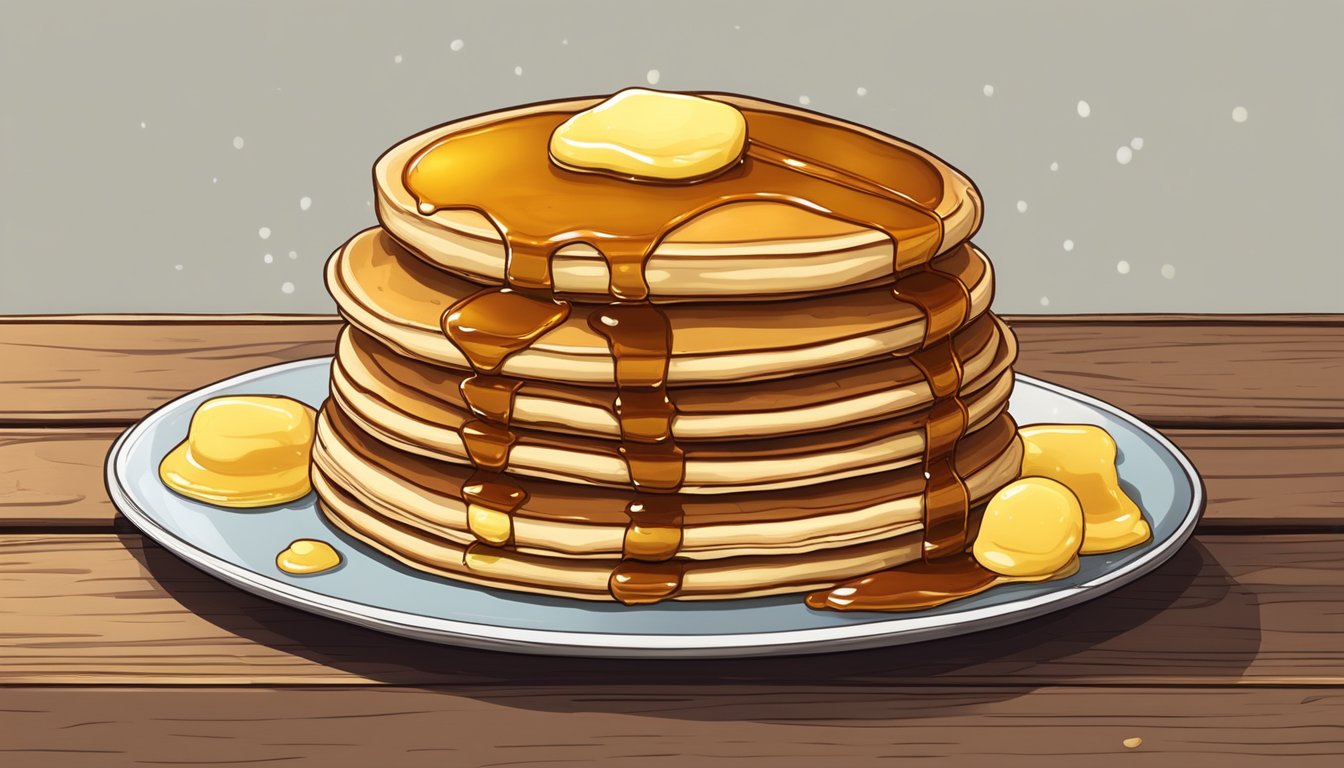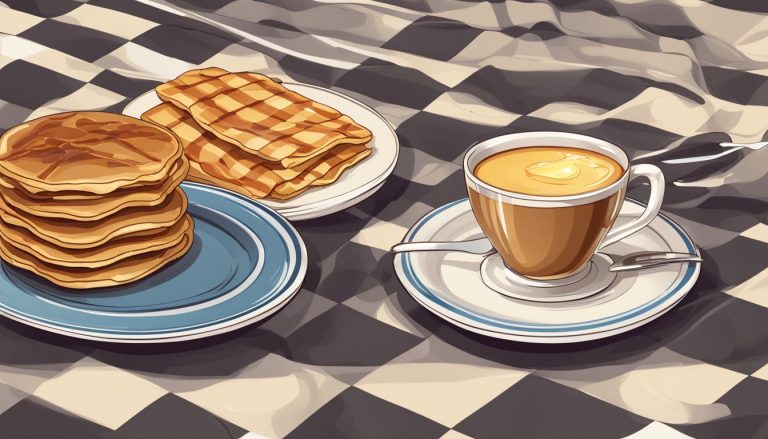Pancakes and syrup form a classic breakfast duo enjoyed by millions around the world. The science behind this perfect pairing involves a fascinating interplay of flavors, textures, and chemical reactions. Syrup’s viscous nature allows it to cling to and penetrate the porous surface of pancakes, creating a harmonious blend of sweet and savory notes.
The composition of pancake syrup plays a crucial role in its interaction with the fluffy breakfast staple. Whether it’s pure maple syrup tapped from trees or commercial varieties made from sugar and corn syrup, these sweet toppings share key properties that enhance the pancake-eating experience. Their high sugar content not only provides sweetness but also contributes to the syrup’s ability to coat and moisten each bite.
Pancakes themselves are products of culinary science, with leavening agents like baking powder creating tiny air pockets that give them their characteristic texture. This porous structure is ideal for absorbing syrup, allowing the flavors to meld and creating a satisfying mouthfeel. The combination of soft, warm pancakes and cool, flowing syrup also offers a pleasing temperature contrast that heightens the sensory experience.
The Basics of Pancakes

Pancakes are a beloved breakfast staple made from a simple batter of flour, eggs, milk, and leavening agents. The science behind these fluffy discs involves key ingredients and chemical reactions that create their signature texture and taste.
Components of Pancake Batter
Pancake batter consists of dry and wet ingredients. The dry ingredients typically include flour, sugar, salt, and leavening agents like baking powder or baking soda. Flour provides structure through gluten formation. Sugar adds sweetness and helps with browning.
Wet ingredients usually comprise milk, eggs, and melted butter or oil. Milk hydrates the flour and adds flavor. Eggs bind ingredients and contribute to structure. Butter or oil enhances flavor and prevents sticking.
Some recipes call for buttermilk, which adds tanginess and interacts with leavening agents. Mixing dry and wet ingredients creates a smooth batter that’s ready for cooking.
Role of Leavening in Pancakes
Leavening agents are crucial for creating fluffy pancakes. Baking powder is most common, containing both an acid and a base that react when moistened. This reaction produces carbon dioxide bubbles, causing the batter to rise.
Baking soda is sometimes used, especially in buttermilk pancakes. It reacts with the acid in buttermilk to create gas bubbles. Some recipes combine both for optimal rise.
The chemical reaction continues during cooking, expanding the bubbles and creating a light, airy texture. Overbeating the batter can develop too much gluten, resulting in tough pancakes. Gentle mixing preserves air pockets for maximum fluffiness.
Syrup: The Sweet Companion
Syrup is an essential partner to pancakes, offering a range of flavors and textures to enhance the breakfast experience. Its unique properties make it the perfect topping for fluffy stacks of pancakes.
Types of Syrup
Maple syrup stands out as a popular choice for pancake enthusiasts. Produced from the sap of sugar maple trees, pure maple syrup offers a rich, complex flavor profile. Pancake syrup, often made from corn syrup and artificial flavorings, provides a more affordable alternative.
Honey serves as another natural syrup option, bringing its distinctive sweetness to the table. Some consumers opt for homemade syrups, crafting unique blends using fruits or other flavoring agents.
High fructose corn syrup is commonly used in commercial pancake syrups due to its low cost and ability to resist crystallization. This syrup type has become controversial due to health concerns.
Nutritional Content of Syrups
Pure maple syrup contains trace amounts of minerals and antioxidants. It provides manganese and zinc, which play roles in bone health and immune function. Maple syrup also contains antioxidants that may help reduce inflammation.
Honey offers small amounts of vitamins and minerals, along with antioxidants. It contains enzymes and amino acids not found in other syrups.
Pancake syrups made from corn syrup typically lack significant nutritional value beyond their calorie content. These syrups often contain artificial additives and preservatives.
Impact on Health
Consuming syrups in moderation can be part of a balanced diet. However, excessive intake may lead to health issues. All syrups are high in sugar and calories, which can contribute to weight gain and obesity if consumed in large quantities.
Pure maple syrup and honey offer some nutritional benefits compared to refined sugar syrups. They contain antioxidants and minerals that may have positive health effects.
Overconsumption of any syrup type, especially those high in fructose, may increase the risk of developing type 2 diabetes. Moderation is key when enjoying syrup with pancakes or other foods.
Science Behind Pancake and Syrup Harmony
The perfect pairing of pancakes and syrup is rooted in scientific principles. Pancakes provide an ideal canvas for syrup due to their porous structure, which allows the syrup to seep into the tiny air pockets.
This absorption process enhances flavor distribution and creates a delightful textural contrast. The golden-brown color of pancakes, achieved through the Maillard reaction during cooking, complements the amber hue of most syrups visually.
The Maillard reaction also contributes to the pancake’s flavor profile, producing complex tastes that harmonize with syrup’s sweetness. As heat breaks down sugars in the batter, it creates caramel-like notes that further enhance this flavor synergy.
Syrup’s viscosity plays a crucial role in this pairing. Its thickness allows it to cling to the pancake surface, ensuring even coverage and preventing excessive runoff. This property maximizes the syrup-to-pancake ratio in each bite.
Temperature differences between hot pancakes and room-temperature syrup create a pleasing sensory experience. The warm pancake slightly thins the syrup, making it easier to spread while maintaining its distinct texture.
Chemically, the combination of carbohydrates from both pancakes and syrup provides a quick energy boost, explaining why this pairing is often associated with breakfast. The balance of flavors and textures makes pancakes and syrup a scientifically sound culinary match.
Pancake Variations and Syrup Pairings
Pancakes offer endless possibilities for flavor combinations and toppings. Different styles of pancakes pair well with various syrups and accompaniments, allowing for personalized breakfast experiences.
Exploring Pancake Toppings
Classic maple syrup remains a popular choice for pancake lovers. Its rich sweetness complements the fluffy texture of pancakes perfectly. For a fruity twist, try topping pancakes with fresh berries and a drizzle of berry syrup.
Whipped cream adds a light, airy texture to pancake stacks. Pair it with chocolate chips for an indulgent treat. Nuts provide a satisfying crunch – try chopped pecans or almonds with a caramel syrup.
For health-conscious eaters, Greek yogurt makes an excellent topping. Add a sprinkle of granola for extra fiber and nutrients. Savory pancake enthusiasts might enjoy toppings like crumbled feta, sun-dried tomatoes, or sautéed mushrooms.
From Classic to Specialty Pancakes
Buttermilk pancakes are a timeless favorite. Their slightly tangy flavor pairs well with traditional maple syrup or honey. For special occasions, try making red velvet pancakes topped with cream cheese frosting.
Banana pancakes offer natural sweetness. Top them with peanut butter and a drizzle of chocolate syrup for a decadent breakfast. Blueberry pancakes burst with flavor – enhance them with lemon-infused syrup.
Experimenting with pancake mixtures can yield exciting results. Add pumpkin puree to the batter for fall-inspired pancakes, perfect with cinnamon syrup. For a savory option, incorporate herbs and cheese into the batter. Serve these with a side of sour cream or herbed butter.
Creating the Perfect Pancake Experience
The perfect pancake experience starts with the right batter. A balanced mix of flour, eggs, milk, and a leavening agent is essential. Baking powder is often preferred over baking soda for its reliable rise and neutral taste.
Cooking technique plays a crucial role in achieving the ideal pancake. A preheated non-stick pan or griddle set to medium heat ensures even cooking. Pour the batter in small circles for uniform shapes.
Timing is key. Wait for bubbles to form on the surface before flipping. This typically takes about 2-3 minutes per side. The result should be a golden-brown exterior with a fluffy interior.
For special occasions, consider adding mix-ins like blueberries or chocolate chips. Sprinkle them onto the wet batter immediately after pouring it onto the pan.
The perfect pancake pairs wonderfully with warm maple syrup. The syrup’s viscosity allows it to seep into the pancake’s pores, creating a harmonious blend of flavors and textures.
Presentation matters too. Stack pancakes neatly, alternating with butter pats between layers. Drizzle syrup over the top, allowing it to cascade down the sides for an appetizing visual appeal.




